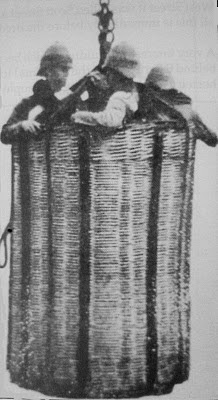It was at Amahlongwa 90 miles from here. I felt as though I could not get ready to go with my family, & then go such a great distance with them. Eliza was not five months old then. But we did go, & on our way down we called at Doct. Adams, one day’s ride this side of Amahlongwa. We found him more unwell than usual from his labors the previous Sabbath, & they had reluctantly decided not to attend the Meeting, though every thing was prepared for the journey. We left, and spent five or six days. After we had started to return, a messenger came with the intelligence that Doct. A. was dead. We hastened on & arrived at the station the same night & found indeed that our dear sister was a sorrowful widow. He had died during the night, & Mr Butler very Providentially was there, having left the meeting one day sooner than the others on account of his wife whom he left at home ill. We remained till after the funeral & then returned home worn out.Charlotte was anxious for her husband Aldin:
He is growing old fast & as one after another of our brethren fail in the midst of their years, I cannot but think that he too may soon go. He has been recently writing to the Rooms [HQ of the ABCFM] an account of the sickness and death of Doct. Adams, also a letter to his [Adams’s] afflicted mother in Bloomfield, N.Y. Mr Lindley is a little older than Mr G. He is now unable to preach, & we have some fears that he may soon follow our lamented br. A. Two others have also poor health. One would have said when I came out to Africa that Mr Grout would soonest fail, but then who were the strongest have first been called. But if we are all prepared, if our lamps are constantly trimmed & burning, it matters little who is first called.Rev Aldin had been busy, with help from his mission Africans, building a Meeting House (chapel) for their community at Umvoti. We get a clear picture of this structure – and how much time and effort went into its creation - when reading Aldin’s report to his brother-in-law, James Bailey, in July 1855:
Some years ago … we had commenced building a Meeting House. We have not been at work on it quite as long as Solomon was in building his Temple, but it is only this year that we report it as finished. The people subscribed 15 pounds in money which bought boards enough to finish flooring and seating it. It has a roof of thatch but its walls are of burned bricks, its floor of boards, and it is seated throughout. I have made a pulpit which tho humble in its appearance, resembles pulpits which we see at home. Our people placed the boards, but I have made all the seats with my own hands, as well as to joint the floor boards and put them down. The whole is 50 feet by 32 in the extreme, and will seat 400 natives. I have not unfrequently had it full. We have had from our Society to put up this building only $50. All the other expense has been borne by our people and self, and white people who see it say it is worth $1000.The same letter to James Bailey makes reference to two interesting developments in Natal: first, that it is becoming a ‘sugar-growing country’ and second, that ‘two men from Java’ who were experienced in the production of indigo had settled in the Colony with a view to cultivating the plant commercially and establishing an industry.
The men from Java were Dutch planters T C Colenbrander and W Van Prehn. [See Colenbrander in the search facility on this blog.]






















